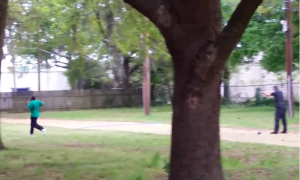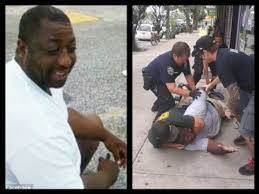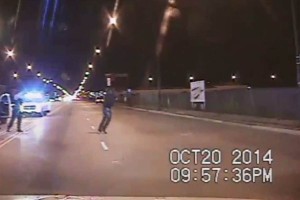This is the 8th story in our series looking back on a quarter century of reporting by Consortium News.
“Detroit” is a new movie that reminds Americans that the issues of racism and police brutality are nothing new, blights on the nation that have never been properly addressed, as James DiEugenio describes.
This is an exact copy of how the article appeared on Consortium News on Aug. 24, 2017.
By James DiEugenio
The new film Detroit by director Katherine Bigelow and screenwriter Mark Boal is about an event that took place in i1967. But with what has happened in America over the past couple of years, it could not be more timely, particularly since the fatal police shootings of male African-Americans, such as Michael Brown in Ferguson, Alton Sterling in Baton Rouge, and Philando Castile in St. Paul. In all three cases, the officer involved was eitheracquitted, or no charges were filed.
The Bigelow/Boal film reenacts another infamous event in which three African-American youths were killed in one night at the hands of Detroit police officers, a particularly ugly episode amid the larger Detroit riots of July 1967. To quell those disturbances, Michigan Gov. George Romney and President Lyndon Johnson dispatched armed troops to the city, ultimately leaving 43 people dead and 1,189 injured. Combined with the Newark riot several days earlier, nearly 70 people had been killed due to racial violence in less than a month.
The chaos led President Johnson to appoint the Kerner Commission to investigate the underlying causes of the violence. The commission famously concluded, “Our nation is moving toward two societies, one black, one white—separate and unequal.”
The Algiers Motel incident – the focus of the new movie – represented something of a microcosm of those divisions and how they sometimes had deadly consequences. The incident gained notoriety at the time mostly due to the work of author John Hersey, who is best known for his reporting on eyewitness accounts of the U.S. nuclear bombing of Hiroshima on Aug. 6, 1945.
Regarding the Detroit riot, Hersey investigated the Algiers Motel case, how and why three black youths were killed. Hersey published The Algiers Motel Incident in late 1968, deliberately releasing the book before all of the legal proceedings surrounding the incident were concluded. He felt the sooner the public was aware of what happened there, the better America could understand and deal with the killings, which were committed, as the legal phrase puts it, “under the color of authority.” Or, as the author phrased it, “the law taking the law into its own hands.” (Hersey, p. 31)
A Story Within a Story
The incident began late on the evening of July 25 – two days into the riots that rocked Detroit – and extended into the early part of July 26. The police said they thought they had detected sniper fire coming from the annex of the Algiers Motel, called Manor House. So, a number of police, state troopers and security guards invaded the annex and occupied it for about nine hours. During that time, a total of 12 individuals were beaten and physically and psychologically tortured.
As Hersey noted, the tactics that were employed broke every aspect of the police codebook. They seemed more typical of an out-of-control army unit in the Vietnam War than a race riot in Michigan. Besides the black youths, two young white girls were physically abused and stripped down to their panties, while being taunted with the epithet, “Nigger-Lovers.”
According to witness Roderick Davis, Officer David Senak roared, “Why you got to fuck them! What’s wrong with us?”
While lined up against the wall, the suspects were then told to pray with the anticipation that they would soon be killed. As they were weeping and quivering, a policeman would drop a switchblade next to one of the detainees and say, “Pick it up and defend yourself!”
When someone would get cracked with a rifle butt and start to collapse, the cop would scream, “Don’t fall down or we’ll shoot you!” Pointing at a dead body, a cop would ask a suspect, “What do you see?” The reply would be “A dead man.” The cop would then pistol-whip that person and shout, “You didn’t see anything!”
Finally came the coup de grace: the “Death Game.” An officer would take a detainee into a nearby room. He would tell him to lie down and be quiet. He would then shoot into the floor or wall. He would emerge alone and say something like: “That nigger didn’t even kick,” and ”You will all die unless you talk.” (Hersey pgs. 254-75)
When the occupation of the Algiers Motel was finally over, three African-American youths had been killed: 17-year-old Carl Cooper, 18-year-old Fred Temple, and 19-year-old Aubrey Pollard. No sniper weapons of any kind were recovered. As presented in the film, the youths had been playing around with a starter’s pistol.
Incriminating Evidence
Clearly, the police involved hoped the incident would be lost amid the uproar and open destruction of the surrounding riot. But two things happened which brought the affair into the open. Contrary to what the police at first maintained, the medical examiner determined that the dead youths were not shot at a distance during a rifle firefight. They were killed inside the motel annex at close range by a shotgun using double “O” buckshot, the same type used by the police. (Ibid, pgs. 42-47)

A screen-shot from a video showing Walter Scott being shot in the back by a North Charleston, South Carolina, police officer Michael Slager on April 4, 2015. (Video via the New York Times.)
As Hersey noted, complementing this, there was never a call into police headquarters by any of the police or other law enforcement agents relaying information that snipers had been shot and their bodies should be picked up. Further exposing the true facts, on July 30, the local newspapers began to break a story saying there had been three boys killed inside the hotel. The story added that “Officials now fear that the three Negroes were deliberately executed.” (p. 59)
By the next day, the National Guard was being accused of the shootings. A local newspaper had hired a second medical examiner who agreed that the youths were killed inside the building, had been shot twice, and at close range while in defensive postures.
At this point, two officers, Robert Paille and Ronald August, changed their stories. After first denying they had shot anyone, they said they had shot, respectively, Pollard and Temple, but that it was in self-defense.
The local District Attorney had no choice but to indict them. (Hersey, p. 297) The oddest thing about this first round of indictments was that Patrolman David Senak, who most witnesses pegged as the ringleader — as the film Detroit also does — was not indicted for anyone’s death or injuries.
Even FBI Director J. Edgar Hoover was forced to admit that the revised statements “for the most part were untrue and were undoubtedly furnished in an effort to cover their activities and the true series of events.”
The legal defense of the policemen was aided by their police comrades and judicial rulings by white judges. There also was evidence that witnesses were harassed prior to trial. For example, witness James Sartor was picked up and questioned four times before the trial of officer Robert Paille, which was the first of the police trials. Three other witnesses were arrested. (Ibid, pgs. 354-59)
Second, the alterations of Paille’s affidavit, from innocence to complicity, was ruled unconstitutional because he was not read his Miranda rights in advance. This allowed the charges against him to be dismissed. As many commentators have noted, the idea that a policeman had to be read his Miranda rights seemed a bit silly, since it is their job to inform others of their right not to make self-incriminating statements.
Third, the defense attorney, Norman Lippitt, requested a change of venue since he felt the publicity had inflamed the Detroit populace against his clients. This motion was granted, and both the trial of officer August and the final conspiracy trial were handled by all white juries. At the federal conspiracy trial, both August and Senak said the victims tried to grab for their guns.
Systemic Bias
When the trials were concluded, no one was convicted over the three deaths, the physical assaults, or the psychological torture. This outcome supported one of the main themes of Hersey’s book: residents of the black ghetto perceived both the police and the justice system to be biased against them. And they were correct.

Eric Garner, suspected of selling “loose cigarettes” who died on July 17, 2014, when New York police placed him a chokehold and sat on his chest. (Image from Youtube)
Hersey, who died in 1993, always maintained he never wrote the book to make money and he refused royalties for his effort. Apparently, the Hersey estate intended to keep his pure intentions into perpetuity. So Boal and Bigelow had to do their own research.
After an animated series of Jacob Lawrence drawings depicting the Great Migration of African-Americans from the South to the North, the film shows how the riot began, with a police raid on an illegal after-hours party. Here, Boal uses dramatic license by making one of the partygoers an undercover police agent. I did not see why this was necessary, as nothing I read in Hersey’s book or other accounts portrayed this as being the case.
From that point, however, the film follows actual events — from the uprising outside the speak-easy or “bling pig,” its spread to nearby looting and then escalation into a riot, including setting buildings on fire. We see young Congressman John Conyers standing atop a car trying, unsuccessfully, to calm the crowd.
The film then cuts to Senak — renamed Krauss in the film — chasing and shooting a looter, Joseph Chandler. (Hersey mentions this in his chapter on Senak.) Notable about this incident, after being questioned about the shooting, Senak was allowed to go back to work.
Interwoven with these scenes is documentary film footage of the massive riot unfolding, and the inability of the authorities to control the spiraling violence. We see Romney making public announcements and hear Lyndon Johnson’s voice on the soundtrack. Bigelow is greatly aided here by her editors William Goldenberg and Harry Yoon and also her visual effects department. The documentary scenes are barely discernible from the film’s scripted scenes, which greatly aids the desired realism the director was after.
The Back Story
The action slows down as screenwriter Boal portrays the events that preceded the night of terror at the Algiers. Some of the victims at the Algiers were members of a singing group called The Dramatics. We see them performing in a packed auditorium and then retreating to the motel afterwards to avoid the riot.
These scenes are interspersed with shots of a private security guard named Melvin Dismukes (played by John Boyega) who worked nights near the motel. Boal made Dismukes and Larry Reed (Algee Smith) of The Dramatics into his two main African-American characters.
The film’s portrayal of Dismukes is different from Hersey’s presentation. Boal and Bigelow essentially make Dismukes into an innocent bystander throughout; a kind of silent witness to the brutalization, a man who, because of his skin color, then gets framed by the authorities and is indicted.
Dismukes was actually the first person to go to trial and he, too, was acquitted. But there is testimony in Hersey’s book that the African-American Dismukes did participate in some of the brutality, by smashing Michael Clark with a gun butt. (Hersey, p. 241)
But the failure of Dismukes to actually take any effective action to prevent what happened at the Algiers is echoed in an episode underlined by Hersey and presented in the film. State Trooper commander Hubert Rosema pulled his men out early, just before the terror began, as the victims were being lined up in the hallway. Hersey was critical of this decision since it gave the local police free rein over the property. (Hersey, p. 250)
Bigelow’s presentation of what went on at the motel during the terror is presented vividly and with intensity. She uses many different devices to give movement and vibrancy to actions that all take place in a rather small, confined area. The actors stay in character at a heightened emotional state. (For reasons stated above the exception is Boyega as Dismukes.)
Bigelow has cast three young, relatively unknown actors at the three rogue cops. For apparent legal reasons, Bigelow and Boal have changed their names. As noted Senak is now Krauss, Paille is Flynn and August is Demens. The three young actors who play the rogue cops are all strong and forceful, although Will Poulter as Krauss/Senak could have been a bit more menacing. There is not a poor performance in the film, which is an achievement since there are no big name actors in the cast.
Differing from Hersey’s account, Boal has Krauss/Senak shooting Carl Cooper just after the police broke into the building. He then places an open switchblade next to the body. In reality, no one was ever charged in Cooper’s death, even though everyone agrees he was the first victim killed. Although there were two witnesses who said they saw a switchblade next to Cooper’s body, no one identified Senak as the man who put it there.
The death of Aubrey Pollard is depicted as a mistake. Officer Demens (played by Jack Reynor) did not know about the modus operandi of the Death Game, and just took Pollard into a room and killed him. Fred Temple is killed after the police have let everyone else run away on condition they pledged not to talk. Boal has Krauss ask Temple about the dead body lying on the floor. When Temple gives the wrong answer, the cop shoots him.
This may or may not be how the boys were killed. And to Boal’s credit, at the end of the film, there is a title card which says that events have been dramatized based upon an incomplete record.
The Post-Scripts
As mentioned above, there were four trials that followed the incident. The film depicts only the final one, the federal conspiracy trial. Because of several pre-trial motions, that proceeding did not take place until 1970. Partly because of the publicity over Hersey’s book, it was moved out of Detroit. Unlike what the film implies, Dismukes was on trial with the policemen.
Boal ends the film with a true to life coda. Larry Reed dropped out of the Dramatics after the incident. Boal did several long interviews with Reed, whose departure was done at great personal economic sacrifice. The Dramatics went on to have three top-twenty Billboard hits and they are still active today.
We see Reed struggling with the Algiers experience and then deciding to become a singer and choir leader in church music. The man who receives his application tells Reed that he is overqualified. Reed responds that it does not matter; this is what he wants to do.
In this age of comic book junk like Wonder Woman, Boal and Bigelow have decided to make a film that reflects on life as it is today in America. After the financial success of Zero Dark Thirty, their controversial recounting of the hunt and killing of Osama bin Laden, they could have done just about anything they wanted. They decided to use their career capital in a risky way. They did this film because it showed how little real progress has been made in America on race relations.
Many of the Kerner Commission’s recommendations about ways to bridge America’s racial chasm were ignored. Therefore, the root causes of the riots in Detroit and Newark are largely still with us. In 1992, Los Angeles exploded over the original verdict in the Rodney King case. As noted above, the last few years have all reminded us that police misconduct and subsequent cover-ups very much continue as well. Even more recently, the fatal clash between white supremacists and counter-protesters in Charlottesville shows how polarized America still is on the issue of minority rights. The rightwing demonstrators there chanted “white lives matter” in response to the Black Lives Matter movement.
In the middle of his book, Hersey wrote, “I want to bring out before your eyes and ears some aspects of the life of a young black man in the city in the circle of his family and friends. This will be the substitute for the reality that a black man could give you at this point. I am what I am.” (Hersey, p. 167)
Hersey did his best to tell the story of the black victims in the Algiers Motel incident. In Detroit, Bigelow and Boal deserve kudos for their effort, too.
James DiEugenio is a researcher and writer on the assassination of President John F. Kennedy and other mysteries of that era. His most recent book is Reclaiming Parkland.



Show Comments